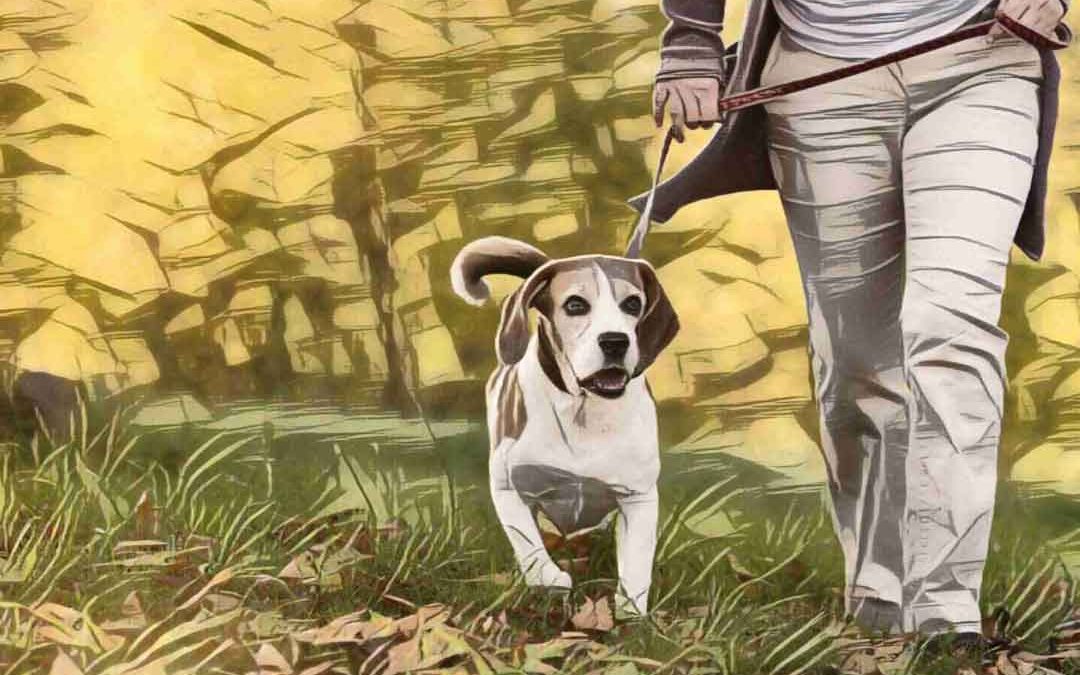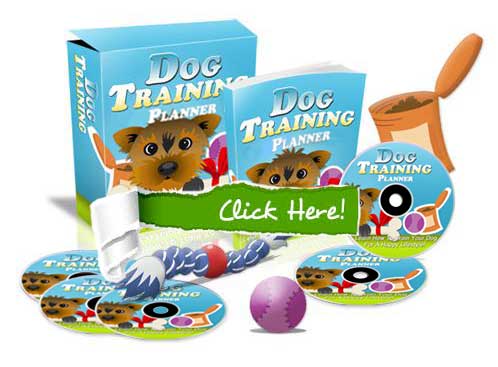Overview
The “Teach Your Dog To Heel Drill” was taken from the Dog Training Planner. If your dog pulls on your lead (leash), you’ll love this dog training exercise.
When teaching a dog to walk without pulling, we often see a complete breakdown in communication between the pet parent and dog, which leads (forgive the pun) to a lot of frustration.
You do NOT need a choke chain or shock collar to discourage your dog to not pull on lead! The only tools you need to teach your dog to do this are your sophisticated human brain and a patient attitude.
Video
The Steps
If you scroll down a bit, you’ll see that I’ve written out all the steps from the video for you. Videos are great if you’re a visual learner!
Most people learn dog training drills best by first watching a video tutorial, and then having the written steps available during the training session, so they don’t get confused (Pssst, if you want to completely avoid confusion, you might like to get your paws on my Dog Training Planner).
Illustrated Cheat Sheet
I hope you like my illustrated cheat sheet. Feel free to download it for personal use. It includes a painting I created for it (you can see my dog art here).
One Step At A Time
Hey, if you don’t want to download and use the illustrated guide above, I’ve also included all the steps below for you. I’ve done you a huge psychological favour by hiding each step (except the first one).
Complete a step before opening the next one.
This one-step-at-a-time philosophy dramatically increases your chances of completing all the steps.

Teach Your Dog To Heel In 6 Steps
Step 1: Release Energy
 The first step, for your dog to not pull on the lead, is understanding why dogs pull on a lead (leash).
The first step, for your dog to not pull on the lead, is understanding why dogs pull on a lead (leash).
Dogs walk faster than humans do. Very often the dogs that are pulling on a lead are the dogs that are bred to have exceptional endurance and stamina like hunting dogs, herding dogs, or receiving dogs. Those kinds of dogs are definitely not bred to walk slowly next to a human. Nonetheless, dogs have shown us throughout their history that they are highly adaptable to what we teach them.
Do what you can to get that initial energy out of them (e.g. play ball, go for a long walk) before introducing the “not pulling on a lead” concept to them. Dogs are much more receptive to learning once they’ve released some of their pent-up energy.
Dogs need to get tired.
Dogs need an outlet for their abundant energy.
Step 2: Indoors At Home
 When introducing the “not pulling on a lead” concept to them, it’s important to do it indoors at home, because it’s an environment that they are familiar with.
When introducing the “not pulling on a lead” concept to them, it’s important to do it indoors at home, because it’s an environment that they are familiar with.
The last thing you want to say to your dog is,
“Hey, I’m going to teach you something new and I’m going to ask you to do it in a distracting environment.”
Step 3: Shape The Position
 Click and treat when the dog is near or in the correct position.
Click and treat when the dog is near or in the correct position.
Pro Tip I: As soon as your dog pulls, stop and take three steps back, then continue walking forward. Repeat over and over again each time your dog pulls on the lead.
Pro Tip II: Get their attention with a treat early on. Hold the treat up close to your eyes, so your dog focuses on you, but be clear, this is not to “lure your dog”. The treat is just to get their initial attention on you. The dog treat is temporary.
Step 4: Parallel
 Only click and treat when the dog is getting close to the perfect heal position (parallel to you).
Only click and treat when the dog is getting close to the perfect heal position (parallel to you).
Pro Tip I: Interact with your dog often during this training session on the lead. If they slow down when on the lead, say “Yes” and give a treat.
Pro Tip II: If they know how to sit, ask them to sit and give a treat when they sit, even if they know the sit command really well because you’re combining it with another behaviour (not pulling on the lead) so acknowledge their success with a treat.
If your dog is a jumper (likes jumping up on you when on the lead), ignore the behaviour. If you need help with stopping your dog from jumping, you’ll like my How To Stop Your Dog From Jumping On People In 4 Steps post.
Step 5: More
Step 6: Go Outside
 Once your dog gets the hang of heeling when on the lead, try the training outside.
Once your dog gets the hang of heeling when on the lead, try the training outside.
Whenever you change environments on a dog, there will almost certainly be relapses (because there are more distractions in the new environment). So, it is very important to be patient with your dog!
More important than correcting behaviour is to reward your dog when he or she is excelling at the new task you’re giving them (e.g. with a positive “Yes“, and a treat). So, every time your dog slows down, say “Yes” and give it a treat (but you already know that because you’ve read and absorbed step 4).
And just in case you’re thirsty for more, here are my top seven lead training tips for energetic dogs…
Top 7 Lead Training Tips
Tip 1: Different Training Styles
There are many different styles of dog training, and finding the one that works best for you is important for helping your dog become a faithful member of your family. All successful methods of dog training work to reinforce the relationship between dog and handler. Fortunately, dogs are wired by nature to seek out leaders, and to follow the direction of those leaders.
Tip 2: Lead/Collar Training
This post focuses on one of the most popular methods of dog training – lead/collar training. Most of the posts on this site focus on the other popular style of training dogs often called reward training or positive reinforcement.
Both lead/collar training and reward training have been around for a long time, and they have proven their effectiveness over time. The type of training that works best will vary from dog to dog, and from breed to breed. It is important to remember that each breed of dog has its own unique qualities.
Tip 3: Dog Personalities
Personalities of individual dogs vary quite a bit, even within established breeds. You, as the owner of the dog, know better than anyone which style of dog training will work best.
Tip 4: High Level Of Reliability
Lead and collar training is the best way to accomplish many types of dog training. For instance, dogs that have an important job to do, such as police dogs, generally benefit from leash and collar training.
Tip 5: Degrees Of Force
In lead and collar training, varying degrees of force can be used, ranging from slight prompts with the lead to very harsh corrections. The amount of correction used should be appropriate to the situation.
Tip 6: Controlling & Communicating
In a dog collar and lead-based training program, first, the dog is taught a particular behaviour, generally with the lead. After the dog has demonstrated that it understands the command, the lead is then used to correct the dog if it disobeys, or makes a mistake.
The lead is the main form of controlling and communicating with the dog in lead and collar training.
Tip 7: Physical Manipulation
When using dog lead training tips, the dog is trained to trust the handler and accept directions without question.
In order for the dog to be fully trained, the handler must demonstrate the ability to place the dog into a position they do not want to take. This may require some level of physical manipulation. This manipulation is most easily and safely done using the main tool of lead and collar training – the lead.
Final Thoughts
I hope you enjoyed teaching your dog to heel.
It is important for every would-be dog trainer to understand that the “lead” is simply a tool. It is important for the dog trainer to eventually achieve the same results using whatever tools are at hand.
Even when the only tools at hand are the owner’s body and skill, the dog should be willing to obey.
Creating a leader-follower relationship between handler and dog is still important. A properly trained dog should be willing to obey whether the lead is present or not.
Before you go, read on to discover the secret sauce to dog training success...
Loving Leadership
Have a philosophy of loving leadership when training your dog.
As a loving leader, you should be constantly working on the communication pathways with your dog. At the bare minimum, your dog should also have some basic commands such as the lie-down command, sit command, and stay command.
When your dog knows a few basic dog obedience commands he or she will feel loved because they know what you want and have no anxiety or fear about what they should be doing and when.
Once your dog has a few commands under his or her belt (I mean, collar), practice behaviour dog training, command dog training and tricks dog training regularly to ensure your dog is physically and mentally healthy. As you are probably acutely aware, untrained dogs have a way of taking over the control of a home if not taught otherwise (which can be a nightmare). A trained dog, however, will bring years of doggie love to your household.
Pssst. Don't tell anyone, but you can become a loving leader by getting your paws on my Dog Training Planner. You can get my Dog Training Planner for a limited time at a 70% discount.






